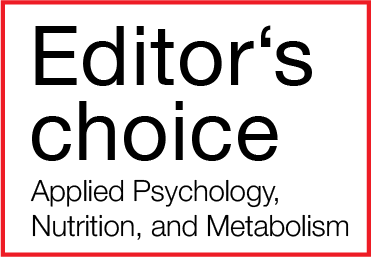seca mBCA: Validation and Normal Ranges
The performance and accuracy of every BIA device depends directly on its validation and reference data. We are proud that our seca mBCA has passed a unique, extensive scientific validation process. In order to establish the unmatched excellence of the seca mBCA, we publish our validation and reference data studies transparently with free access to the full text articles. In the studies below, you will find confirmed that
- the seca mBCA is the only device that is validated against whole-body MRI, 4C, NaBr and D2O dilution methods.
- the seca mBCA has been validated for different ethnicities.
- the seca mBCA is validated for obese individuals (>30 kg/m²).
- the seca mBCA validation follows a transparent methodology.
- the seca mBCA provides multi-ethnic reference data of more than 3.000 individuals from Germany, Japan and Mexico.
This means you can trust in every parameter provided by the seca mBCA.
Validation Studies
Publications
1. Generation of precise BIA equations for analyzing body composition in a multiethnic population based on the 4-compartment model and sodium bromide dilution method
Phase 1 of the study was designed to develop mBCA equations for prediction of FFM, ECW and TBW based on a four-compartment model, sodium bromide (NaBr) and deuterium dilution (D2O) as reference methods. A total of 124 Caucasian men and women were recruited at the Institute of Human Nutrition and Food Science in Kiel, Germany.
Phase 2 of the study validated the developed equations using the same reference methods as in phase 1 in an independent multiethnic sample of 130 men and women (32 Caucasians, 36 Asians, 31 Afro-Americans and 31 Hispanics) recruited at the New York Obesity Nutrition Research Center, USA.
Fat-free mass (FFM) was validated using the 4-compartment model (4C model). Only the 4C model takes into account the biological variability of the water and mineral content. Other methods such as DXA can only partly estimate this, which can lead to less precision – particularly among thin and athletic patients. The fat-free mass (FFM) correlates to 98% (R² = 0.98) with the 4C model.
In order to obtain a medically precise determination of body water it is necessary to make use of dilution methods that require time-consuming evaluation in the laboratory. The total body water (TBW) correlates to 98% (R² = 0.98) with deuterium dilution (D2O dilution) while the extracellular water (ECW) correlates to 95% (R² = 0.95) with the sodium bromide dilution (NaBr dilution).
This means you receive data that you can actually use and rely on.
Bosy-Westphal, A., Schautz, B., Later, W., Kehayias, J. J., Gallagher, D., & Müller, M. J. (2013). What makes a BIA equation unique? Validity of eight-electrode multifrequency BIA to estimate body composition in a healthy adult population. European journal of clinical nutrition, 67(S1), S14.
2. Validation of Skeletal muscle mass and visceral fat in a multi-ethinic population using whole body MRI as reference method
This publication is based on the same study population as described above. Measurements of skeletal muscle mass (SMM) and visceral adipose tissue (VAT) volumes were performed in a supine position using full-body MRI. Over 250 full-body MRI were evaluated in total. It is a time-intensive yet very thorough approach that cannot be achieved with technologies such as DXA (which merely shows pixels in 2D). The result is that the muscle mass correlates to 97% (R² = 0.97) with magnetic resonance imaging (MRI).
In addition, the accuracy of the DXA method for the muscle mass was checked. Here it was shown that the MRI-based values of the seca mBCA for skeletal muscle mass is much more accurate than the DXA measurement.
Bosy-Westphal, A., Jensen, B., Braun, W., Pourhassan, M., Gallagher, D., & Müller, M. J. (2017). Quantification of whole-body and segmental skeletal muscle mass using phase-sensitive 8-electrode medical bioelectrical impedance devices. European journal of clinical nutrition, 71(9), 1061.
3. Improvement of BIA equations for obese population
In a first phase of this study, 143 Caucasian men and women with a BMI < 35 kg/m2 were recruited from the area of Kiel, Germany, and FFM and SMM prediction equations for the seca medical body composition analyzer (mBCA) devices were developed. The seca mBCA 515 was used for BIA measurements, and a 4C model based on D2O dilution, DXA, and ADP was used as reference for FFM, whereas whole-body magnetic resonance imaging (MRI) and sodium bromide (NaBr) dilution were used as references for SMM and ECW, respectively.
In a second phase, 32 obese Caucasian men and women with a BMI ≥30 kg/m2 were examined using the same study protocol.
It is shown that BIA and DXA overestimated and ADP underestimated FFM in comparison to 4C models with increasing BMI (all p < 0.001). Differences were largest for DXA. In conclusion, FFM measured by the reference methods DXA and ADP has a systematic error in obesity. These methods are therefore no appropriate standards for body composition in obesity.
The BIA equations can be improved for measurements in obese persons when a correction term for subjects with BMI ≥30 kg/m2 is used (Fig. 1; online suppl. Table S1). This correction leaves results for nonobese subjects unchanged and avoids abrupt changes of results with increasing BMI.
The use of corrected BIA measurements for FFM or SMM can be a suitable alternative as long as BIA equations are validated versus a 4C model or MRI
Jensen, B., Braun, W., Geisler, C., Both, M., Klückmann, K., Müller, M. J., & Bosy-Westphal, A. (2019). Limitations of Fat-Free Mass for the Assessment of Muscle Mass in Obesity. Obesity facts, 12(3), 307-315.
mBCA Reference Data
Publications
4. Generation of normal ranges for body composition analysis in Caucasian adults
In a cross-sectional study, reference values for phase angle, bioelectrical impedance vector analysis (BIVA), the body composition chart (BCC), skeletal muscle mass (SMM), total body water (TBW), extracellular water (ECW) and fat mass (FM) were generated stratified according to gender, age and BMI using the seca mBCA 514/515. There for 1050 healthy blood donors (532 men and 518 women) were examined before blood donation.
Peine, S., Knabe, S., Carrero, I., Brundert, M., Wilhelm, J., Ewert, A., ... & Lilburn, P. (2013). Generation of normal ranges for measures of body composition in adults based on bioelectrical impedance analysis using the seca mBCA. Int J Body Compos Res, 11, 67-76.
5. Multi-ethnic reference data determined by the mBCA 515/514 in 3 international scientific studies on ethnic differences in body composition

3,069 men and women were measured with the seca mBCA 515/514 at the University Hospital Hamburg-Eppendorf, the University of Tokyo Hospital and the Instituto Nacional de Ciencias Médicas y Nutrición (Mexico City). The observational study provides insight into typical body composition of the three populations and confirms significant differences in body composition among the groups. The results show that not only the average BMI differs among Germans, Japanese and Mexicans, but fat mass, muscle mass and their distribution also differ for men and women with the same BMI. Normal ranges for body composition were generated from the collected reference data and implemented in the mBCA.
Jensen, B., Moritoyo, T., Kaufer-Horwitz, M., Peine, S., Norman, K., Maisch, M. J., ... & Fonz-Enríquez, E. (2018). Ethnic differences in fat and muscle mass and their implication for interpretation of bioelectrical impedance vector analysis. Applied Physiology, Nutrition, and Metabolism, 44(6), 619-626.





